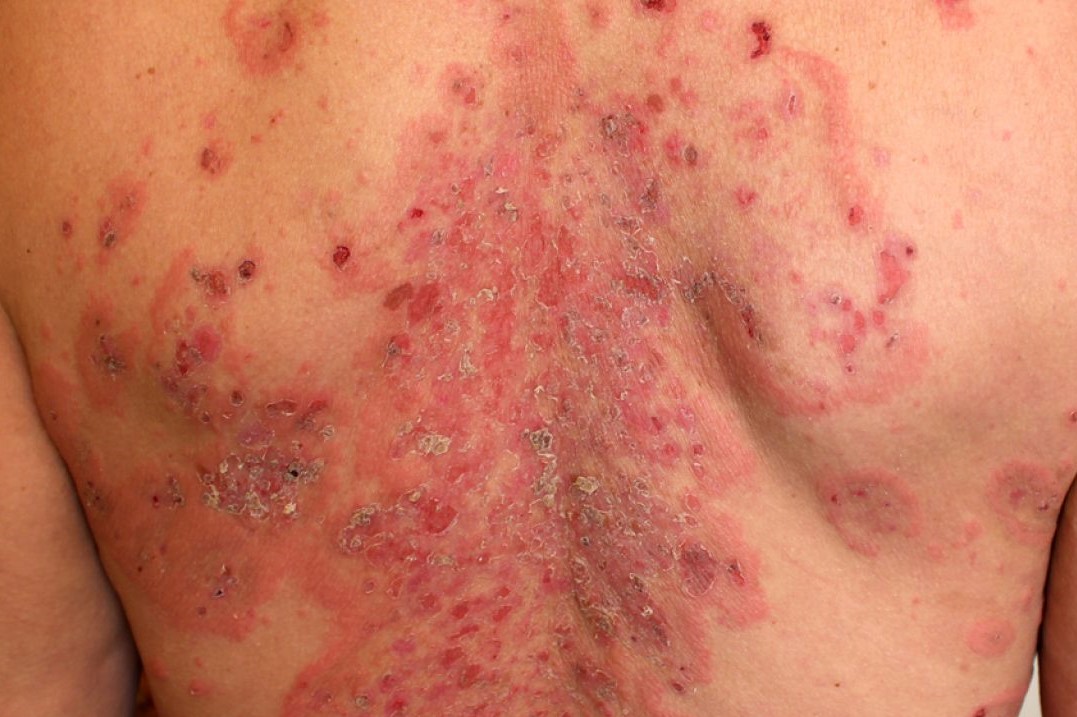
Skin lesions: difference between macula, papule, pustule, vesicle, bulla, phlycten and wheal
Skin manifestations such as spots, blisters, swellings, etc., are part of a vast group of skin alterations and are commonly grouped under the name of skin lesions
Types of skin lesions: the macula
The term “macula” in dermatology means an elementary lesion of the skin, flat and non-infiltrating, characterized by a change in color compared to the rest of the skin.
The macules can have different origins, such as a limited hemorrhage, an alteration of the pigmentation, inflammatory infiltrates.
They can have different colors and be more or less dark based on the amount of melanin.
Ecchymoses are also stains.
Melanodermic spots are defined as dark spots such as ephelides, freckles, nevi or chloasma and leukodermic spots are light spots such as anemic nevi, vitiligo or pityriasis alba.
The evolution of the macula towards the papule is frequent.
Papule
A papule is a small, firm, generally conical-shaped bump on the skin that does not contain pus, which distinguishes them from pustules.
Papules often appear in clusters and are accompanied by a rash.
A condition that causes papules is called papulosis or papulomatosis.
Examples of papulosis are the lymphomatoid type or clear cell papulosis.
Papules can be determined by angiomas, inflammation, infections, acne, accumulation of secretions of epithelial tissue (hyperplasia) or glandular fluids.
Pustule
With “pustule” we mean a circumscribed lesion of the skin of a transient nature, characterized by a superficial cavity containing a small collection of pus and evident to the observer as a relief of the skin.
The site of collection is usually intraepidermal and the liquid is an opalescent, turbid exudate.
Very common examples of pustules are pimples and acne (juvenile or adult).
By collecting the liquid with a swab, the microbiological examination can distinguish: purulent pustules (contaminated by bacteria or other microorganisms) and sterile pustules (resulting from pustulosis or a particular form of psoriasis).
Comedones (blackheads) are often the initial stage in the process that leads to pustule formation.
Vesicle
By “vesicle” we mean a small collection of clear liquid below the outer layer of the epidermis, detectable as a small superficial detection, almost always in the intraepidermal site, rarely in the dermo-epidermal site.
Blisters may appear in irritant or allergic contact dermatitis.
They are called “vesicles” small swellings, with a diameter of less than 0.3 cm, otherwise we speak of bubbles.
The liquid derives from an extravasation of serum or blood from the subcutaneous vessels surrounding the lesion, if instead it is pus, therefore turbid rather than clear, the swelling takes the name of pustule.
The vesicles are also formed in the presence of skin affections: in some cases they represent the most important manifestation of the disease such as for example in pemphigus and pemphigoid; in others, however, they are associated with lesions such as erythema, nodules and pustules.
Bubble
By “blister” we mean a swelling due to a collection of clear liquid under the outer layer of the epidermis, and can be of various sizes, depending on the triggering cause. as we saw in the previous paragraph, it is still larger than a vesicle.
Flyttene
With “flittena” we mean a type of subepidermal vesicle characterized by a swelling due to a collection of liquid, usually serous, under the outer layer of the epidermis.
However, the blister can be filled with blood (we then speak of blood blister) or pus (generally following bacterial superinfection).
The flittena can be of various sizes, depending on the triggering cause.
On the other hand, bubbles caused by burns are called flitten or flitteni.
Wheal
With “wheal” we mean an oedematous lesion of the dermis characterized by a rounded and smooth skin relief, red or white in color, with an erythematous and itchy halo.
The wheal generally occurs as a result of dermatosis, food and drug allergies, viral infections, intestinal parasitosis, insect bites.
It is typically found in hives.
Read Also
Emergency Live Even More…Live: Download The New Free App Of Your Newspaper For IOS And Android
Skin, What Are The Effects Of Stress
Psoriasis, An Ageless Skin Disease
Psoriasis: It Gets Worse In Winter, But It’s Not Just The Cold That’s To Blame
Childhood Psoriasis: What It Is, What The Symptoms Are And How To Treat It
Topical Treatments For Psoriasis: Recommended Over-The-Counter And Prescription Options
What Are The Different Types Of Psoriasis?
Phototherapy For The Treatment Of Psoriasis: What It Is And When It Is Needed
Skin Diseases: How To Treat Psoriasis?
Basal Cell Carcinoma, How Can It Be Recognised?
Acariasis, The Skin Disease Caused By Mites
Epiluminescence: What It Is And What It Is Used For
Malignant Tumors Of The Skin: Basal Cell Carcinoma (BCC), Or Basalioma
Chloasma: How Pregnancy Alters Skin Pigmentation
Burn With Boiling Water: What To Do / Not To Do In First Aid And Healing Times
Autoimmune Diseases: Care And Treatment Of Vitiligo


